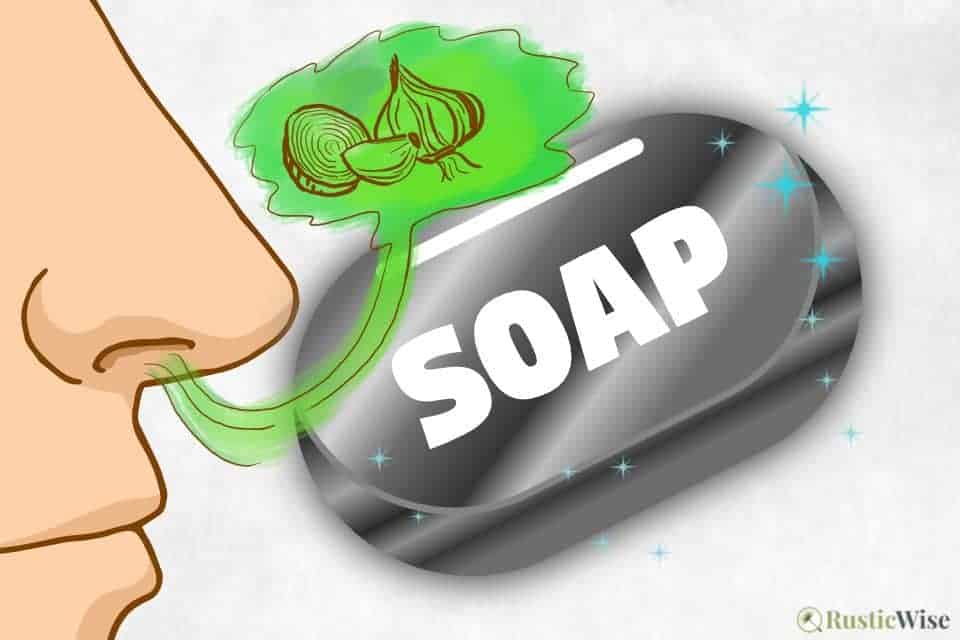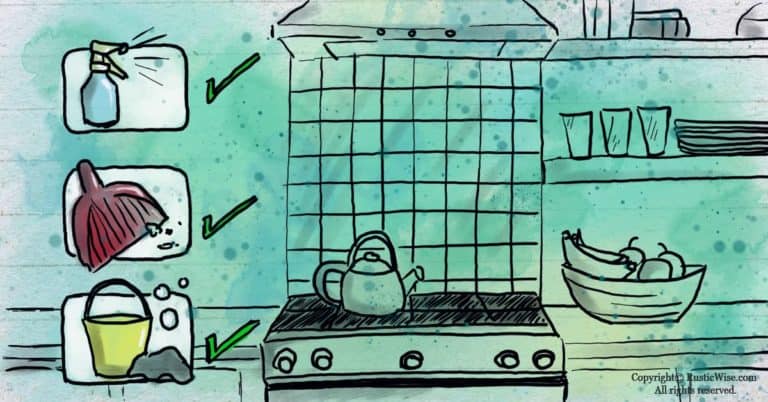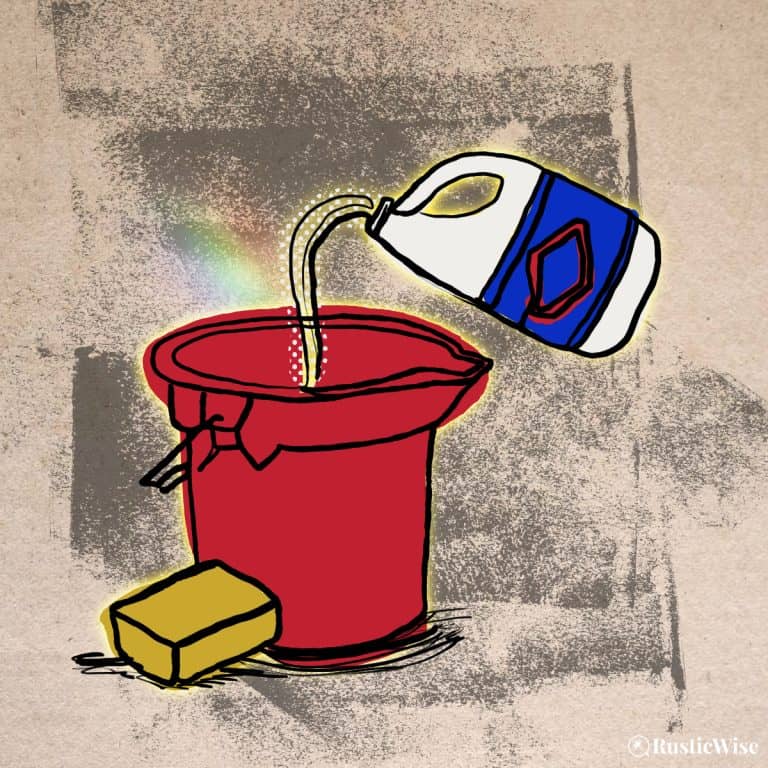How Does Stainless Steel Soap Work? And Is It a Gimmick?
You may have heard that a metal soap bar helps to remove pungent odors. So, how does stainless steel soap work? The outer layer of stainless steel is made of chromium which supposedly acts to remove the sulfur compounds present in foods like garlic from your hands, thereby neutralizing the smell.
Does this cleaning hack actually work? Is it worth investing in a stainless steel hand cleaner? Keep reading to learn more about what makes garlic so smelly, and how to rid your hands of powerful smells.
What exactly is stainless steel soap?
Stainless steel soap bars reduce strong cooking odors that linger on your hands from dicing and chopping onions, garlic, and fish. These odor removers are shaped just like a regular bar of soap. They are intended to neutralize the unpleasant scents your hands pick up during a day in the kitchen.
Do a quick Google search for “stainless steel bar soap” and you’ll find dozens of listings of lumps of metal shaped like regular bar soap.
While these metal bars are called “soap” they don’t actually clean bacteria off your hands. Metal soap may only neutralize or minimize odors, NOT effectively wash your hands.
You’ll still want to follow your stainless steel soap rinse with a proper handwashing (sing the Happy Birthday song twice) with scrubbing your hands with regular soap and hot water.
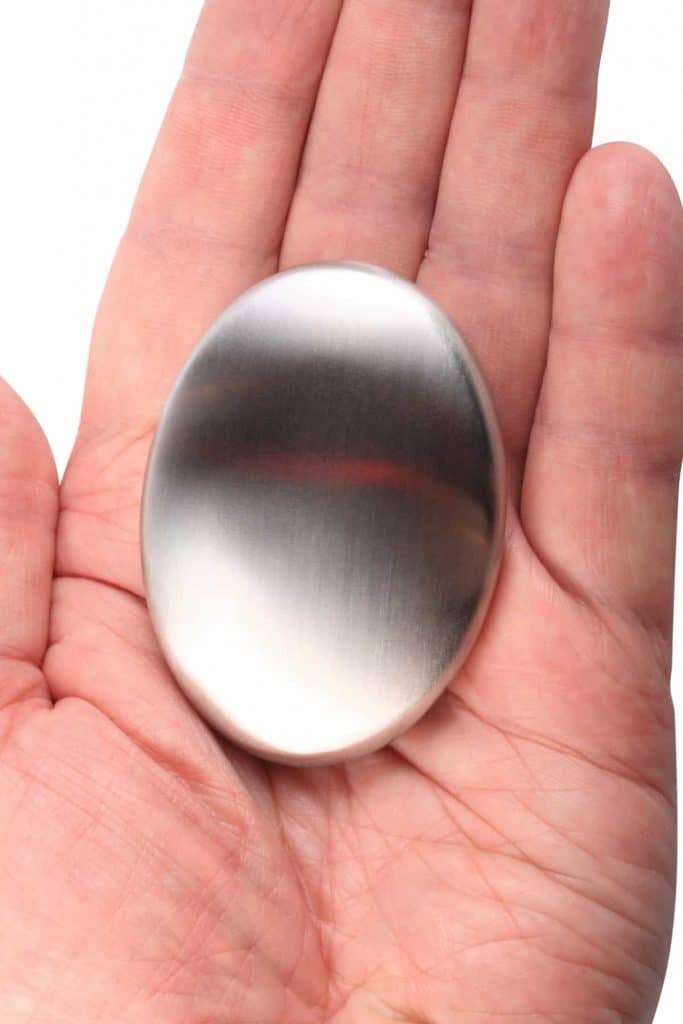
Credit: 123RF.com
A closer look at the composition of stainless steel
Stainless steel comprises a metal alloy made typically of iron or nickel and a layer of chromium. Chromium, which contains a minimal amount of carbon, is what makes the metals resistant to heat and corrosion. Most stainless steel alloys contain anywhere between 10 and 30 percent chromium.¹
Stainless steel soap bars often have a brushed, smooth finish that’s gentle on skin.
How does stainless steel soap work?
Run your hands under cold or lukewarm water and rub your hands over the metal bar of soap, just as you would with regular soap. You can also use it without water, but it’s probably less effective that way.
The consensus seems to be that the chromium in stainless steel works to bind with the organosulfur compounds on your hands after working with pungent foods. These sulfur compounds are found in foods including garlic and onions, and other members of the allium family. Many manufacturers also claim their steel soap bars get rid of the smell of fish and other strong spices.
Note that the mechanical action of rubbing your hands against the steel soap plays an important role. Just as good handwashing practices dictate vigorous and thorough scrubbing of hands for at least 20 seconds, apply the same rule here when using your stainless steel soap to remove as much of the sulfur compounds as possible.
What makes garlic so smelly?
Have you ever noticed that a whole garlic clove isn’t really that smelly? It’s when you crush, dice, or chop that garlic clove that the distinct aroma is unleashed in all its glory.
Garlic contains an enzyme called alliin. Once alliin is broken down from crushing, dicing, or chopping, it forms a more pungent aroma called allicin. Allicin, also called alliinase, breaks down further into four main organic sulfuric compounds: diallyl disulfide, allyl methyl sulfide, allyl mercaptan, and allyl methyl disulfide.²
The latter, allyl methyl disulfide, is the most stubborn and long-lasting sulfur compound. If you eat garlic, your body absorbs this compound. It goes into the blood, and your body finally excretes it in various ways: through skin, organs, urine—and commonly through your breath. Hence, garlic breath!²
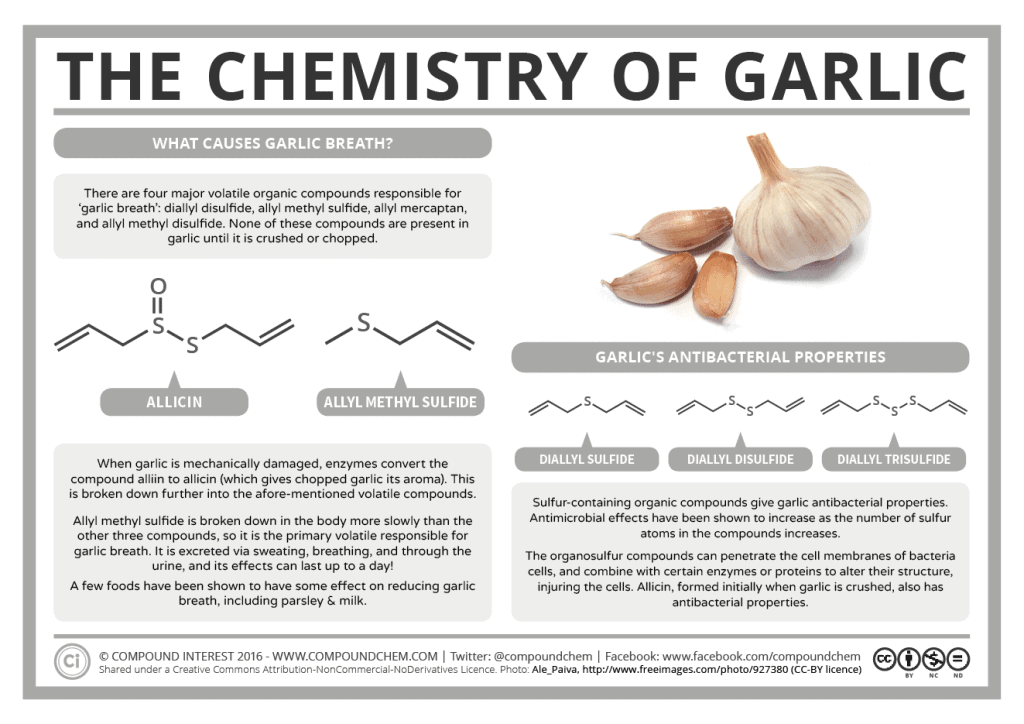
Credit: Compound Chem
Are steel soap bars effective at removing pungent odors?
The jury is out. I have yet to find a definitive answer either way, and I have NOT found any scientific studies supporting stainless steel efficacy at removing strong odors.
But there’s plenty of anecdotal evidence that it works.
In an article about working with garlic in the kitchen, North Dakota State University says, “Some sources suggest removing garlic aroma by wetting your hands and rubbing them on stainless steel (sink, spoon or knife blade with care).”³
If you look up reviews of metal soap online, you’ll find plenty of mixed reviews:
- “Your hands may not smell like onions anymore but they smell like metal and I don’t know which one is worse.”
- “It works like black magic.”
- “Does not work!”
- “Works…sorta”
- “Works like a charm. Even gets dead mouse smell off your hands.”
- “Works great on me pits!”
To me, the more important consideration is not whether stainless steel actually works to remove odors, but does stainless steel soap work BETTER than a stainless steel utensil?
All signs point to no, sadly.
While the convenient and attractive steel soap bar looks cute and is maybe more ergonomic than using a knife blade, it doesn’t actually perform better.
I don’t know about you, but my countertops are already cluttered. Any space around the kitchen sink comes at a premium. Personally, I don’t want another (potentially) redundant kitchen gadget.
Natural ways to remove that stink from your hands
Your pantry likely contains some good natural odor removing ingredients already. The next time your hands reek to high heaven, try one of these DIY solutions.
- Coffee grounds: Save those used coffee grounds! Coffee is a deodorizer and the grounds are an exfoliant. Simply rub between your hands and rinse.
- Lemon and lemon juice + salt: After cutting onions, garlic, or fish, both your cutting board and hands could use some TLC. Slice a lemon, sprinkle a bit of coarse salt on top and rub over your hands. You can use the remaining lemon and salt to clean and deodorize your cutting board.
- Salt + baking soda: Baking soda is a mild abrasive that works to neutralize odors. Coarse salt helps with the scrubbing. Make a mix of 1 part salt to 2 parts baking soda. Add just enough water to make a paste. Scrub over your hands, and follow up with a regular wash with soap.
Do your own garlic-y experiment first
I performed my own experiment at home where I got my husband to rub crushed garlic together into his hands for 20 seconds. I made him really worked that garlic into his skin as if it were soap! After 20 seconds, both hands reeked of garlic.
Next, he quickly rinsed his hands with plain water. I got out a stainless steel spoon and rubbed it all over one of his still-wet hands for 20 seconds. On his other hand, I rubbed a wooden spoon over it for an equal amount of time.
Finally, the sniff test.
Both hands still appeared to have garlic aromas and there really appeared to be little to no difference between the hand that was scrubbed with stainless steel.
Try this experiment at home for yourself! Maybe you’ll find that stainless steel works, maybe you’ll find it’s all hearsay.
Here are a few stainless steel objects you could use to perform your experiment:
- Sink (although this isn’t recommended as most kitchen sinks are breeding grounds for bacteria)
- Stainless steel spoon or soup ladle
- Stainless steel pots, pans, or lids
- Stainless steel knife blade (use carefully!)
The takeaway
Before you spend your hard-earned money on a hunk of steel, do your own science experiment first to see if you find a stainless steel utensil effective at making your hands smell less garlic-y. While there’s anecdotal evidence that stainless steel can help minimize strong odors, there’s really no science to back it up. If you find it works for you, great!
👉 Keep your hands smelling fresh and clean with these DIY kitchen soap bars!

References
- Britannica, Stainless steel, metallurgy, https://www.britannica.com/technology/stainless-steel. Accessed February 2022.
- Compound Interest, What Compounds Cause Garlic Breath? – The Chemistry of Garlic, http://www.compoundchem.com/2014/05/05/what-compounds-cause-garlic-breath-the-chemistry-of-garlic/. Accessed February 2022.
- North Dakota State University, From Garden to Table: Garlic!, https://www.ndsu.edu/agriculture/extension/publications/garden-table-garlic. Accessed February 2022.

Author: Theresa Tesolin
Theresa is co-founder of RusticWise. She helps people unleash their inner DIY spirit by encouraging them to get dirty and make or grow something from scratch.

